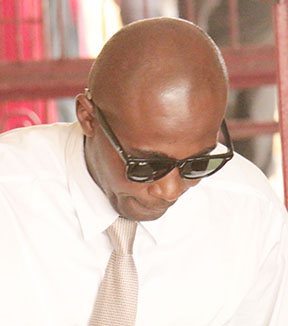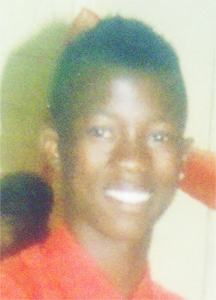Former Police Constable Terrence Wallace yesterday walked out the Supreme Court a free man, after being found not guilty of the murder of 17-year-old Shaquille Grant.
Immaculately clad in a brown suit with shirt and tie, the former accused, who sighed in relief, paused before leaving the courtroom, to express his gratitude to members of the jury. “Members of the jury, I thank you,” Wallace said before exiting the prisoner’s dock.
Justice Navindra Singh, who presided over the trial, informed Wallace that having been found not guilty, he had been discharged and was free to go. “Good luck,” the judge wished him, to which he nodded his head and said thank you.
The 12-member mixed jury returned its verdict before a courtroom packed to capacity, after deliberating for about two and a half hours.
The visibly-shocked family members, relatives and friends of the dead teen could be heard quietly questioning the outcome of the case among themselves and some were moved to tears after the verdict. Among them were Grant’s teary-eyed mother, Shonette Adams, who attended every hearing, and his sister, who appeared overcome with grief. They both immediately got up and walked out of the courtroom after hearing the verdict. They were initially stopped at the door by a police guard and asked to return to their seats until the judge would have formally ended the session. The guard, however, allowed them out after they did not to return to their seats. On the corridors outside the courtroom, Adams sang religious songs as she was being consoled by family, friends and activist Mark Benschop.
The indictment against Wallace stated that on September 11, 2012, he fatally shot Grant at Caesar Street, Agricola, East Bank Demerara. He had pleaded not guilty to the charge.
The case was prosecuted by senior state counsel Judith Gildharie-Mursalin in association with Narissa Leander, while the successful defence attorney was Sonia Parag.
The trial which commenced on May 6, saw 20 witnesses taking the stand.
The prosecution’s case was that Wallace had ordered Grant and his friends—Romel Bollers, Nicholas Eastman, Jamal Henry called, “Tuna,” and Troy Greenidge—to lie on the ground and while complying Bollers began removing his cell phone from his pocket. At once, there was a bang, which appeared to be a gunshot.
The prosecutor had said in her opening address that Bollers was shot to the head, while Grant was heard saying, “Officer, officer, I get shoot.” She said that what appeared to be other gunshots rang out and following the shooting Bollers was injured and Grant was dead.
The court had heard from Gildharie-Mursalin that according to the police’s version, Bollers was attempting to run away from them and while doing so he had discharged a round at them from a weapon which he had. “The officers claimed that the action by Bollers was the catalyst for their shooting,” Gildharie-Mursalin had said.
In his testimony to the court, however, Bollers insisted that neither he nor any of his friends had any weapon when the police opened fire on them.
Lance Corporal Warren Blue and Special Constable Jamal Lewis were also charged with Grant’s murder but they were never arrested. Warrants had been issued for their arrest. Blue was subsequently shot and killed during a botched robbery on the East Coast of Demerara, while Lewis remains at large.
Wallace, who opted to give sworn testimony from the witness stand after being called upon to lead his defence, had told the court that when he got to Agricola, he saw the young men under a shed in the yard and, with his firearm in hand, he shouted, “Freeze! Police!”
He said when he shouted, Bollers drew a gun from the waist of his pants and fired once in his direction as he attempted to run. Wallace added that he immediately returned fire by shooting one round in Bollers’ direction and the young man came to a halt and dropped his firearm next to his feet then knelt on the ground and placed his hands on his head.
Wallace had told the court that almost at that same time there were two gunshots from behind him. “I could not say which of the ranks discharged the fire,” he had said.
Wallace had added further that as he heard those subsequent shots, he saw one of the youngsters, whom he later learnt to be Grant, fall to the ground. Later, he observed injuries to the teen’s face.
He told the court that Bollers complained shortly after of being shot to the back of the head. He said he saw that the young man was bloodied and he, like Grant, was taken to the hospital by other ranks.
Wallace said that the gun Bollers had was a .38 Smith and Wesson revolver.
Asked by his attorney whether he had shot Grant, Wallace had firmly responded, “At no time did I fire a round at Shaquille Grant.” He said the teen posed no threat to him.
During cross-examination, Leander asserted, “Shaquille Grant posed no threat to you and now he’s dead.” The accused, in response, had calmly cautioned that not only were there other ranks behind him at the time. “Two others were charged with me but they are not here,” he said.






